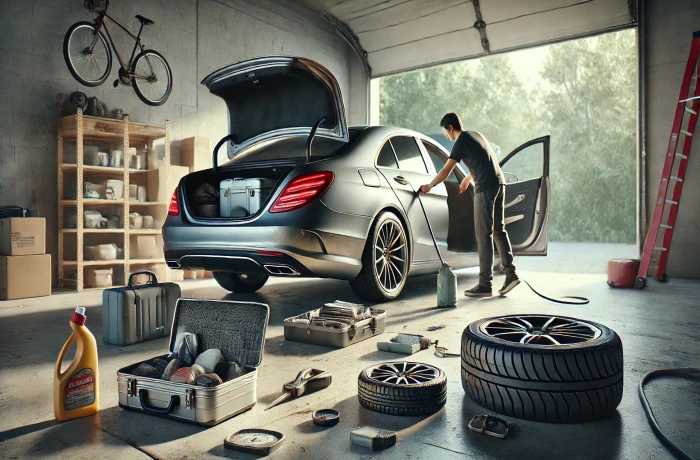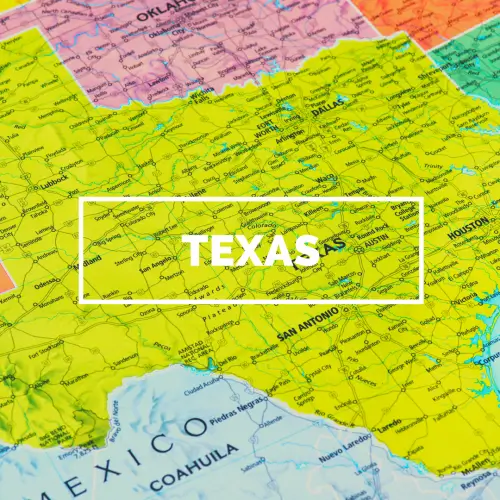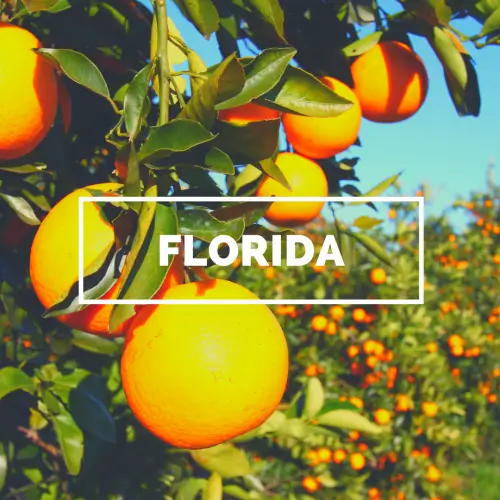Storm-Proof Your Car: Preparation Guide

Lila Claybourne
Sep 25, 2024

How Can You Protect Your Car from Harsh Weather Conditions?
Extreme weather events like hurricanes, thunderstorms, and floods can wreak havoc on everything in their path, including your vehicle. Every year, thousands of cars in the U.S. are damaged or destroyed by storms, leading to costly repairs and sometimes complete vehicle loss. From high winds to flooding, storms can have a devastating effect on your car, making it crucial to take preventative measures.
In this guide, we’ll walk you through practical steps to storm-proof your car, from regular maintenance to strategic parking and car covers. Whether you’re facing hurricane season, blizzards, or heavy thunderstorms, protecting your car is a vital part of being prepared for any storm. Let’s explore how you can minimize damage to your vehicle when extreme weather strikes.
Types of Storms and Their Impact on Vehicles
Understanding the type of storm you're dealing with is the first step in storm-proofing your car. Different weather conditions pose unique risks to your vehicle, and knowing what to expect will help you prepare effectively.
1. Hurricanes:
Hurricanes bring extreme winds, heavy rainfall, and flooding, which can lead to significant damage to vehicles. Winds can throw debris at high speeds, shatter windows, and even cause your car to flip if not properly sheltered. Flooding from storm surges can infiltrate your car's engine, electrical system, and interior, making it one of the most destructive types of storm damage.
2. Thunderstorms:
Thunderstorms often result in flash floods, hail, lightning, and high winds. Hailstones can dent your car, crack windshields, and cause significant exterior damage. Additionally, flash floods can occur quickly, leaving little time to move your vehicle to safety.
3. Winter Storms:
Heavy snow, ice, and freezing temperatures can be equally damaging. Ice accumulation can cause major issues, freezing locks, cracking windshields, and making it difficult to access your vehicle. Additionally, salt used on roads during snowstorms can lead to rust if not cleaned off promptly.
4. Tornadoes:
Tornadoes pose an extreme threat to vehicles due to their powerful winds. They can lift cars, throw them across long distances, and cause severe damage from flying debris.
5. Floods:
Floods can strike without much warning, especially in low-lying areas. The primary risk is water damage to your engine, electrical systems, and interior. Even small amounts of water entering your vehicle can lead to mold, rust, and long-term electrical problems.
Essential Steps to Storm-Proof Your Car
Once you’re aware of the risks that various storms present, the next step is to prepare your car to weather the storm as safely as possible. These preparations are essential to protect your vehicle and minimize the risk of damage.
1. Routine Maintenance:
Routine maintenance is a key part of keeping your car ready for any type of weather, including storms. Before storm seasons, it’s important to ensure that your vehicle is in peak condition to withstand harsh conditions.
Tires: Ensure your tires have the correct pressure and sufficient tread. Properly inflated and well-treaded tires can prevent slipping during rain or snow.
Brakes: Your brakes should be checked for efficiency in wet or icy conditions. Bad brakes increase the risk of skidding or losing control on slick roads.
Fluids: Top off all necessary fluids such as oil, coolant, and especially windshield wiper fluid. Windshield visibility is crucial in storms.
Windshield Wipers: Ensure that your windshield wipers are in good working condition, as visibility during a storm is critical.
2. Battery Check:
Storms can knock out power in your area, leaving you without a way to jump-start your car if the battery dies. Ensure that your battery is fully charged and in good condition before a storm hits to avoid being stranded.
3. Securing Loose Parts:
Check for any loose parts on your car, such as antennas, side mirrors, or roof racks. In high winds, these can become dislodged and cause damage to your vehicle or others around it. Tighten or remove these parts before the storm arrives.
Parking Strategies for Storm Protection
Where you park your car during a storm can make a huge difference in how much damage it sustains. Here are some key strategies to keep your vehicle as safe as possible:
1. Indoor Parking Options:
The best way to protect your car from storms is to park it indoors. If you have access to a garage, make sure your car is parked there before the storm hits. Garages provide protection from high winds, hail, and flying debris.
Garage Storage: If your garage is cluttered, clear enough space to park your vehicle. Garages offer the best protection against storm damage.
Public Parking Garages: If you don’t have a garage, consider using a public parking garage during a severe storm. These facilities are usually well-constructed and can offer much-needed shelter for your vehicle.
2. Outdoor Parking Tips:
If indoor parking is not an option, there are still steps you can take to minimize storm damage when parking outside.
Avoid Low-Lying Areas: Parking your car in a low-lying area can increase the risk of flood damage. Look for higher ground, especially if there is a risk of flash floods or storm surges.
Stay Clear of Trees and Poles: Falling branches and power lines are common during high winds, and they can severely damage your car. Avoid parking under or near these structures.
Angle Your Car: During windy conditions, park your car so that the front or rear, rather than the side, faces the wind. This can reduce the amount of damage caused by strong gusts.
Use of Car Covers and Tarps
Investing in a storm-resistant car cover can provide an additional layer of protection during a storm. While car covers can’t completely prevent damage, they can reduce the likelihood of scratches, dents, and interior damage from broken windows.
1. Selecting the Right Car Cover:
Choose a cover designed for storm protection, often labeled as "weatherproof" or "all-weather." These covers are typically heavier and more durable than standard options.
If you live in a flood-prone area, consider using a waterproof cover to prevent rainwater from seeping into your car’s interior.
2. Securing the Cover:
In high winds, car covers can easily be blown away, leaving your vehicle unprotected. Use straps, sandbags, or weights to secure the cover tightly. Some covers come with built-in straps to help keep them in place during storms.
3. Risks of Using Tarps:
While tarps may seem like a cheap alternative, they can cause more harm than good. Tarps are not designed to fit snugly over vehicles and can easily be torn by strong winds, potentially scratching your car’s paint or allowing water to seep in.
Emergency Kits for Your Car
Having a well-stocked emergency kit in your car can be a lifesaver during a storm. Whether you get caught in bad weather while driving or need to evacuate, an emergency kit ensures you’re prepared for the worst.
1. Basic Emergency Kit:
Flashlight with extra batteries
Portable battery charger for your phone
First aid kit for minor injuries
Blankets and extra clothing for warmth in cold weather
Bottled water and non-perishable snacks
2. Weather-Specific Additions:
Ice scraper and de-icing spray for winter storms
Waterproof bags to protect important documents in case of flooding
Poncho or rain gear for heavy rain conditions
Being prepared with these items can make a big difference if you’re stranded or need to quickly evacuate in bad weather.
Considerations for Long-Term Storm Seasons
If you live in a region prone to frequent storms, it’s essential to take additional steps to protect your vehicle during long-term storm seasons.
1. Seasonal Car Maintenance:
Before entering a storm-heavy season like hurricane or winter, schedule a comprehensive check-up for your vehicle. This will help ensure that your car is prepared to handle prolonged exposure to extreme weather.
Check weather seals around doors and windows to prevent leaks.
Inspect the undercarriage for rust or corrosion, especially if you frequently drive on salted roads in winter.
2. Vehicle Storage:
For those who need to store their vehicles during storm seasons, long-term protection strategies can prevent damage:
Use enclosed storage facilities to protect against the elements.
Elevate your vehicle if storing in a flood-prone area to avoid water damage.
AmeriFreight Services for Storm-Prone Areas
If you live in a storm-heavy region or need to move your car to safety during hurricane season, AmeriFreight is here to help. With our reliable auto transport services, you can have peace of mind knowing that your vehicle will be transported safely to your desired location. We offer enclosed transport options for extra protection during extreme weather, ensuring your car arrives in pristine condition.
Whether you're moving across the country or simply need to transport your vehicle to a safer area during storm season, AmeriFreight has the expertise to handle it all. You can easily get a free quote for vehicle transport here.
Conclusion
Storm-proofing your car is an essential part of protecting one of your most valuable assets. By taking proactive steps such as performing regular maintenance, using protective covers, and parking strategically, you can significantly reduce the risk of storm-related damage. And when moving your vehicle to a safer location is the best option, AmeriFreight is ready to provide secure and efficient car shipping services.
Don’t wait until the next storm hits—start preparing your car today to ensure it’s protected when extreme weather strikes.
FAQs
1. Can storm damage affect car insurance rates?
Yes, if your car sustains significant storm damage and you file a claim, it can potentially affect your insurance premiums. Comprehensive coverage usually protects against storm damage, but it’s a good idea to review your policy details.
2. What should I do if my car gets flooded during a storm?
If your car has been flooded, avoid starting it, as this can cause further damage. Contact your insurance company and a professional mechanic to assess the extent of the damage.
3. Are there specific covers for different types of storms?
Yes, there are storm-resistant covers designed for various weather conditions, such as waterproof covers for heavy rain or reinforced covers for hailstorms.
4. How can AmeriFreight help me move my car during hurricane season?
AmeriFreight offers reliable vehicle transport services, including enclosed transport options to protect your car during transit in storm-prone areas. You can get an instant quote online to prepare for the upcoming storm season.
Related Posts
















